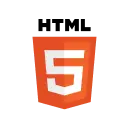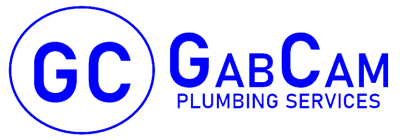Structured Query language (SQL) pronounced as “S-Q-L” or sometimes as “See-Quel” is the standard language for dealing with Relational Databases. A relational database defines relationships in the form of tables. NoSQL databases offer a schema-less or dynamic schema approach, allowing developers to store data without defining a strict structure beforehand.

The bottom line is that there is no right or wrong answer when choosing between SQL and NoSQL databases. The best decision for your business will depend on your particular position. Other businesses may need to use SQL and NoSQL databases to get the most out of their data. For example, a company may use a SQL database for transactional data and a NoSQL database for analytics. The most powerful product is dbForge Edge – a comprehensive IDE that covers all database-related tasks on SQL Server, MySQL/MariaDB, Oracle, and PostgreSQL.
When To Use SQL Vs. NoSQL For Your Big Data Project?
Eventual consistency is a property of NoSQL databases, where updates are distributed asynchronously to maintain high availability. This ecosystem includes diverse frameworks and libraries for working with NoSQL databases. There are also online resources, conferences, and user groups to provide support. There are many when to use NoSQL vs SQL established NoSQL databases, such as MongoDB, Cassandra, and Couchbase, with large and active communities of users and developers. They have a mature ecosystem and a large community of users, developers, and vendors. Data consistency and transaction support in NoSQL databases vary from one database to the next.
So what are the differences between SQL and NoSQL, and which database should you use for your next application? There are many different types of SQL databases, but the most common are MySQL, Microsoft SQL Server, MariaDB, and Oracle. Companies can use them for data storage, manipulation, and retrieval. DbForge tools have a free fully-functional 30-day trial period for users to be able to evaluate all the advanced features they deliver. We invite you to give a test drive to our products and see for yourselves how much easier your work with databases can be.
SQL vs. NoSQL: What’s the Difference?
SQL databases, also known as relational databases, have been in use for over 40 years. NoSQL databases, or non-relational databases, have gained popularity and widespread adoption in the past decade. Of the top 10 results on DB-Engines’ list of most popular database management systems in April 2023, seven were relational, or SQL-based.
They typically support complex search queries, full-text search, result ranking and grouping, and distributed search for high scalability. Imagine a schemaless SQL database, or a document database, inside a key-value store. One of the most widely used NoSQL databases, MongoDB, ranked fifth on DB-Engines’ list and was the highest ranked of the four non-relational databases included in the top 10. HBase is a column-oriented database that is built on top of the Hadoop file system. MongoDB and MySQL are both popular choices in the world of databases.
SQL vs NoSQL: 5 Critical Differences
Thus objects can be easily stored on multiple servers without having to be linked. This is not the case for SQL, where each table row and column needs to be related. Both SQL and NoSQL are used to categorize and communicate with different database management systems (DBMS), specifically relational and non-relational databases.
- Some examples of SQL databases include MySQL, Oracle, PostgreSQL, and Microsoft SQL Server.
- It’s used in Oracle, Sybase, Microsoft SQL Server, Access, and Ingres.
- As a result, costlier and more technical staff might be needed to perform the queries.
- While other databases, such as a document-oriented non-relational database, have querying capabilities.
- In a graph database, all these people are represented as nodes, and the relationships between them are represented as edges.
- SQL databases are the most common type of relational database, and they are used by a wide variety of businesses and organizations.
In the past, storage was expensive, and normalizing your data saved storage. Documents can be structured in any way, making them very flexible. Column-oriented stores are often used for data warehousing and analytics applications. Examples of column-oriented stores include Cassandra and HBase. A SQL database is a relational database that uses Structured Query Language (SQL) for storing, retrieving, and manipulating data.
NoSQL vs SQL
NoSQL makes it easy to store all different types of data together and without having to invest time into defining what type of data you’re storing in advance. If your data is highly structured and you anticipate minimal change then there’s probably no reason to use NoSQL. Because SQL is mature and supported by a strong technical community, your engineers won’t run into https://www.globalcloudteam.com/ problems they can’t solve. With NoSQL you’re more likely to run into tough problems without documented solutions which can lead to delays. For example, both MongoDB and Cassandra DB are both good NoSQL databases for an engineer new to NoSQL, to learn. However, if an engineer first learns MongoDB, they may still struggle with Cassandra DB because NoSQL lacks standards.

NoSQL is a class of DBMs that are non-relational and generally do not use SQL. The ability of NoSQL databases to horizontally scale has to do with the lack of structure of the data. Because NoSQL requires much less structure than SQL, each stored object is pretty much self-contained and independent.
When to use SQL
Great for hierarchical data storage, it also supports familiar relational concepts from indexing to aggregation to some measure of ACID compliance. Like MySQL, it is compatible with many platforms and programming environments, despite relative recency. In a document-oriented database, the structure of the data sorted isn’t so rigid. Instead, the data is stored as a collection of fields and data values together in the structure of a document.
The native connector extracts data from a source, transforms it into the correct format for MongoDB, and loads it into the database. Alternatively, you can ETL MongoDB data to a data warehouse for analytics and generate intelligence about your business for better decision-making. The response time of any RDBMS can become slow when dealing with massive amounts of data.
When to Use NoSQL Databases: NoSQL vs. SQL
SQL is able to read large sets of data quickly in comparison to NoSQL, making it useful for scenarios where several data reading tasks need to be completed at once. In the long run, it is better to add more buildings than floors as that is more stable (Less chance of creating a Leaning Tower of Pisa!!!). Thus, NoSQL can ultimately become larger and more powerful, making NoSQL databases the preferred choice for large or ever-changing data sets. Thus, NoSQL databases are typically well-suited for highly scalable applications. SQL, short for Structured Query Language, is a widely used database query language developed by IBM in 1970. Originally known as SEQUEL, it became publicly available in 1979.
